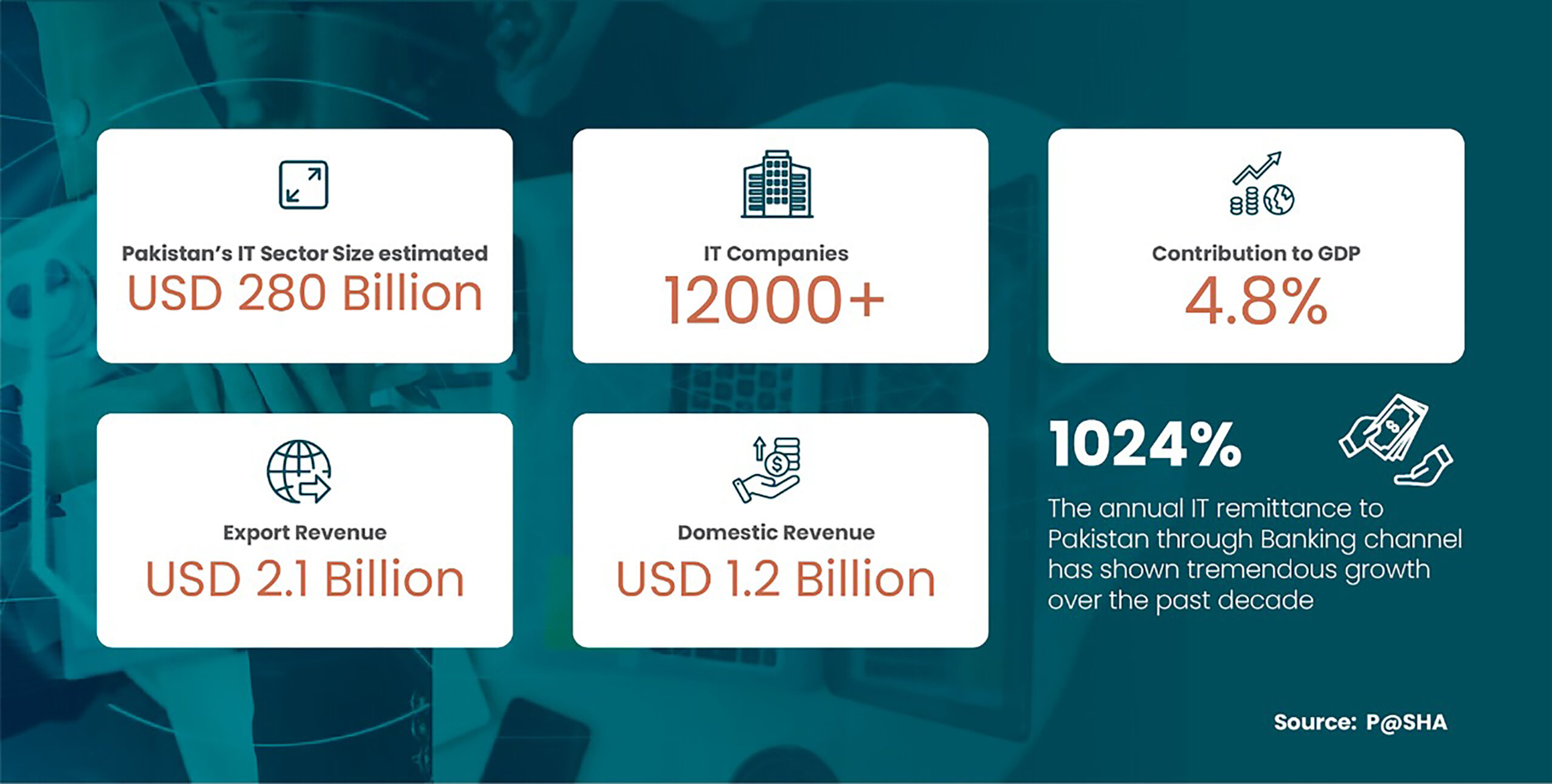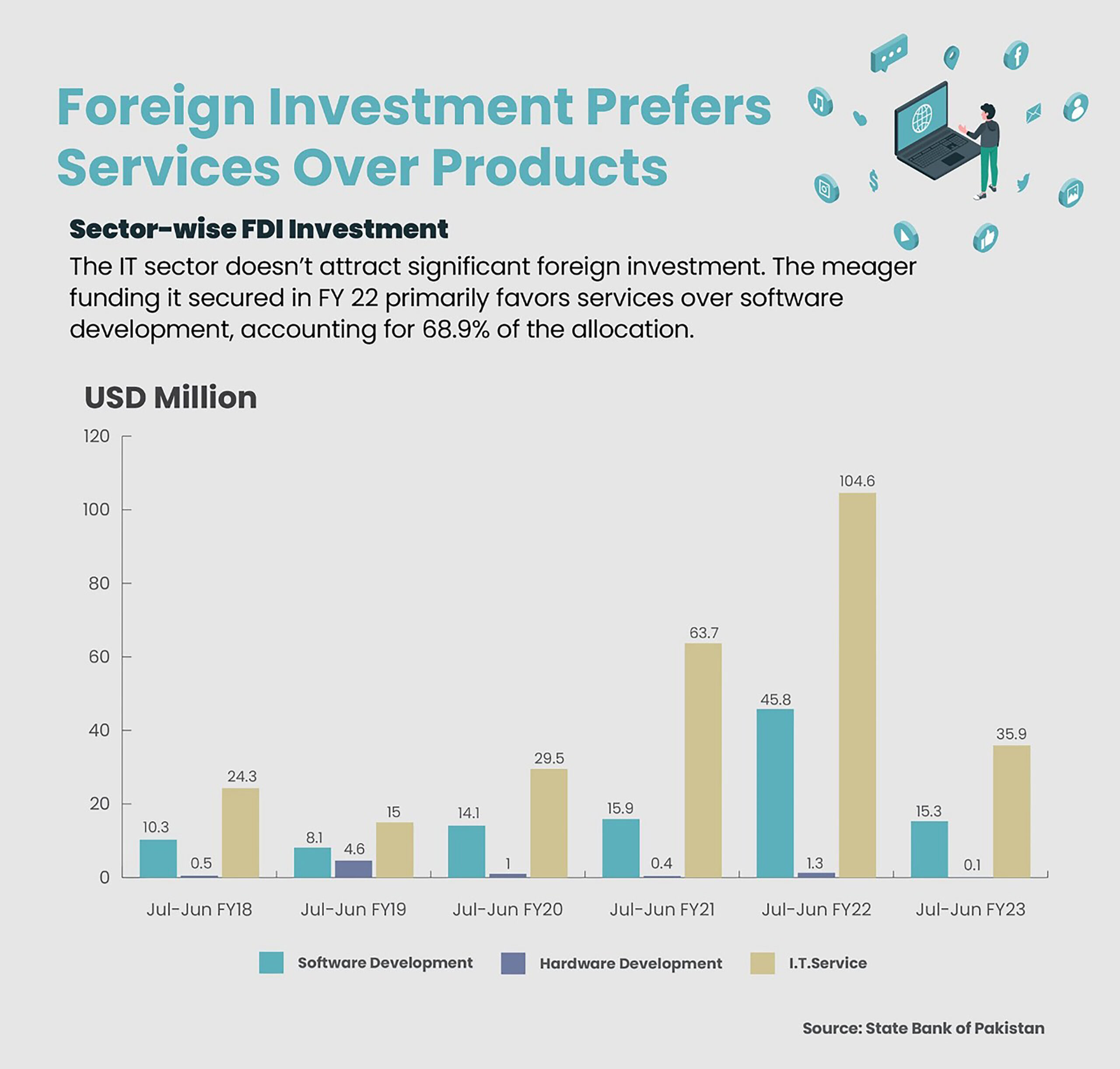Why do all good things or potentially great things stray invariably towards mediocrity in the land of the pure? A lot is being made of the great potential for IT-related exports from Pakistan. It is naturally a very exciting idea since everything else seems to be southbound at a serious pace. Perhaps, we dream that the country can leapfrog economic development and progress at a rapid pace by becoming a haven for the information technology sector.
The so-called IT experts in government are often seen dropping random numbers for Pakistan’s IT export potential – someone says $100 billion, someone else says $50 billion. I think even a decent fraction of this would be nice to have, given that we are currently only at around $2.5 billion!
Before getting carried away with this, the skeptic in me needs a bit more evidence – is this really something we can bet our lives on? Don’t we have to have better talent than most in the world to make such a leap? Do we have the know-how to excel in this market? We are curious if what our IT industry is doing will lead us towards those big numbers.
In order to develop a basic understanding of the subject, we need to clearly define the various categories making up the revenues under information technology; software development is the program written for any application – so very simply the program that runs basic email applications such as Gmail or Yahoo is software. When sold as a program, this is a software product. If you develop the software in-house and do not sell it as a product, you will allow usage of the same under an agreement or license. This is software as a service. Other services would include analytics, cloud computing and security.
We hypothesize that not everything is quite as rosy and wish to make an honest attempt at improving our knowledge. We may not have the perfect data sets to arrive at a clear conclusion but we can start the conversation and this can be followed by more research and analysis by industry players.

So let’s dig a bit deeper with the help of data organization.
To start with, let us look at data from the Pakistan Software Association(P@asha). On its website, it shares the size of the Pakistan export revenues as well as domestic sales, number of IT companies etc. The data shows us that annual IT remittances to Pakistan through banking channels have grown impressively. The estimated sector size is $280 billion, with more than 12000 companies operating in Pakistan and contributing nearly 5% to the GDP. All of this amounts to a total export revenue of just over $2 billion. Naturally, our current numbers are miniscule as compared to other regional players.
Data from the State Bank of Pakistan (SBP) sheds some further light on this. The SBP data for investment in this sector very clearly shows that there is a preference for the services sector as opposed to software development. In fact, services account for nearly 70% of the already meager funding that this sector receives showing a very clear preference.
This is just an assumption, but the definition of services is much broader than just software. It would also cover, for example, the body shopping business model where the IT companies hire local talent at a minimal Pak rupee cost and then place the same talent at some international project at USD pricing. This is the most basic form of labor arbitrage and happens to be the favored model of our leading IT companies.
The other areas within the services sector would be things like website development and management, social media marketing, content creation etc. Nothing at all wrong with these, but the skill level required in these areas is basic IT know-how with an increasing level of sophistication achieved with experience. People in these fields do not have to be good at mathematics – unlike high-skill fields like software engineering or data science, where math and statistics are basic prerequisites.
Pursuing the skill gap hypothesis, data from the World Bank provides more information. Pakistan’s ranking on the GKI scale is one of the lowest in the world. (This scale measures a country’s capability in the Information and communication fields, along with being a general indicator for the quality of education and human resources).

The outline of the emerging story now seems to add up. We are educating and training for low-quality skills and using these resources to service international customers for basic services. This implies that we do not have products to sell. We are only cheap suppliers of service and the output of hundreds of Information Technology institutes is basically following the demand from the lowest end of the IT universe.
A deeper dive into P@sha data shows that less than half of our software and data science workers have the required certifications. This is not too bad since we understand that it is possible to self-learn in these areas, especially with the online learning tools available nowadays. But it does point out that our educational institutes are out of sync with the need for value addition and capturing market share at the higher end of the market.
Unfortunately, we could not find any data for the breakup of IT graduates’ employment in terms of their field of work (software development vs other services). This would definitely make our study more interesting.
Just take another look at the data provided by the State Bank for ICT exports from Pakistan in comparison with our neighbors and other regional players. While there was a positive uptick in growth rates in the last couple of years, unfortunately, our export level is so small that, unless we grow 4-5 times the region for a number of years, we will be unable to catch up.
Already, our cost of doing business exceeds that of many countries in the region that are able to outbid us. India, for example, has not only developed much better product capability but also has a huge worker base at the lower end – meaning it can compete in multiple ends of the market. In fact, according to the Financial Times:
“Companies offering data, cloud and analytics support have made India a software services export powerhouse. But multinationals are opening a growing number of their own back offices, called global capability centres, to develop in-house technology, including cyber security systems and artificial intelligence”
The reality is that in India there is a talent war between IT services export and these Global Capability Centers! On the other hand, Pakistani IT companies are unable to find the required quality of manpower. In support of this there is the recent news report in which the CEO of a better-known Lahore-based software house recently mentioned that less than 10% of local IT graduates are able to pass a basic computer test for his organization.
A State Bank of Pakistan report also mentions that only 10% of IT graduates in Pakistan are employable. For those who have followed the trajectory of the Pakistani industry in general, whatever has been described in this piece and what evidence is showing us, is a bit scary – to say the least.
Unfortunately, Pakistan’s traditional export sectors have followed the same path without product innovation and research and development and with management and organizational limitations for a long time. As a consequence, undoubtedly, their viability is now under serious threat.
It does not take rocket science to understand that competing at the lower end of any market can only be done on the basis of lower costs. For this to happen, a country has to have the right fundamentals – infrastructure at a competitive cost, access to cheap capital, a dynamic domestic market, and many other critical components.
If it does not happen to have most of these, then one should seriously question the basis of an industry business model pitched at the lower end of any market.
One only hopes that Pakistan’s IT industry has learnt its lessons – both from its own evolution thus far – and from those who have been on this path before.
Someone also needs to check the mushrooming of information technology institutes and colleges that claim to offer IT education. They may not all be doing a bad job, but if we believe the 10% number for employability – we would definitely suggest a change in their curriculum.








Such an amazing post. Thank you for sharing it.
Good effort and thanks a lot.